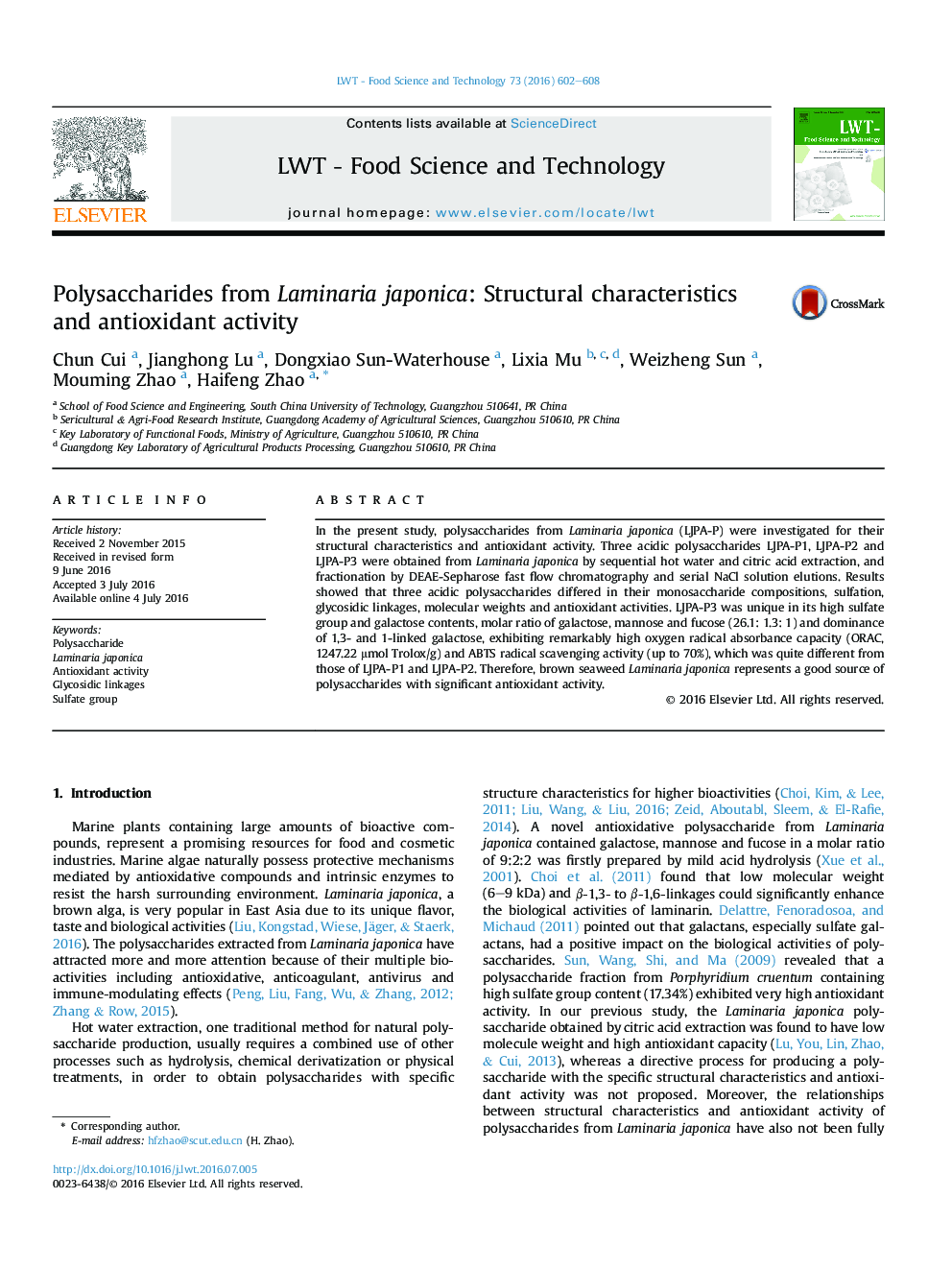| Article ID | Journal | Published Year | Pages | File Type |
|---|---|---|---|---|
| 4563401 | LWT - Food Science and Technology | 2016 | 7 Pages |
•Polysaccharides were obtained by a joint extraction of hot water and citric acid.•Three polysaccharides LJPA-P1, LJPA-P2 and LJPA-P3 were purified and characterized.•LJPA-P3 showed the highest ORAC and ABTS radical cation scavenging activity.•Sulfation, monosaccharide composition and glycosidic linkage affected activity.•Molecular weight seemed less critical for both the ORAC and ABTS activities.
In the present study, polysaccharides from Laminaria japonica (LJPA-P) were investigated for their structural characteristics and antioxidant activity. Three acidic polysaccharides LJPA-P1, LJPA-P2 and LJPA-P3 were obtained from Laminaria japonica by sequential hot water and citric acid extraction, and fractionation by DEAE-Sepharose fast flow chromatography and serial NaCl solution elutions. Results showed that three acidic polysaccharides differed in their monosaccharide compositions, sulfation, glycosidic linkages, molecular weights and antioxidant activities. LJPA-P3 was unique in its high sulfate group and galactose contents, molar ratio of galactose, mannose and fucose (26.1: 1.3: 1) and dominance of 1,3- and 1-linked galactose, exhibiting remarkably high oxygen radical absorbance capacity (ORAC, 1247.22 μmol Trolox/g) and ABTS radical scavenging activity (up to 70%), which was quite different from those of LJPA-P1 and LJPA-P2. Therefore, brown seaweed Laminaria japonica represents a good source of polysaccharides with significant antioxidant activity.
